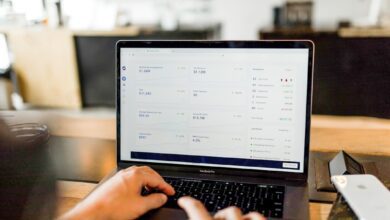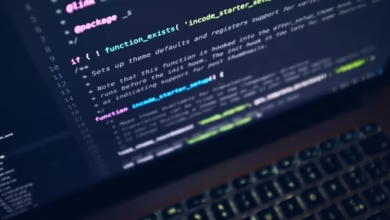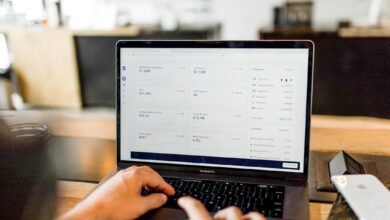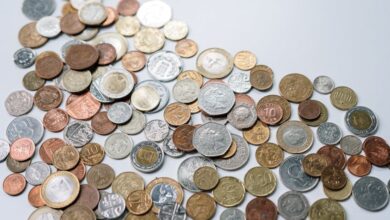Metals in Motion: Navigating Industrial Demand, Investment Trends, and the Future of Resources

In today's rapidly evolving economic landscape, the significance of metals extends far beyond their traditional applications. As both industrial components and investment assets, metals play a crucial role in shaping global markets and influencing economic health. This article delves into the multifaceted roles of various metals, examining how silver serves as a bridge between industrial demand and investment appeal, while copper prices act as barometers for global economic conditions. We will explore the burgeoning impact of green energy technologies on the demand for rare earth metals, compare the investment merits of platinum and palladium, and discuss how metals contribute to portfolio diversification. Additionally, we will analyze the effects of inflation on the prices of precious and industrial metals, consider the future of aluminum in a sustainable economy, and assess how mining regulations impact metal prices. Through this exploration, we aim to provide a comprehensive understanding of the intricate interplay between metals and the economic forces that shape their markets.
- 1. "Silver's Dual Role: Industrial Demand and Investment Appeal"
- 2. "Copper Prices as Economic Indicators: What the Market is Telling Us"
- 3. "Green Technologies and Rare Earth Metals: Shaping Future Demand"
1. "Silver's Dual Role: Industrial Demand and Investment Appeal"
Silver plays a unique and multifaceted role in both industrial applications and investment markets, making it a valuable asset with diverse demand drivers. On the industrial side, silver is widely recognized for its exceptional conductivity, thermal properties, and antimicrobial qualities. It is utilized in various sectors, including electronics, photovoltaics, and medical devices. In the solar energy industry, for instance, silver is a critical component in photovoltaic cells, where it enhances the efficiency of solar panels. As the world increasingly shifts towards renewable energy sources, the demand for silver in these applications is expected to rise, further bolstering its industrial importance.
Simultaneously, silver holds significant appeal as an investment vehicle. Historically regarded as a safe haven asset, it often attracts investors during periods of economic uncertainty or inflation. Unlike gold, which is perceived primarily as a wealth preservation tool, silver's dual role as both an industrial metal and a precious metal provides a unique investment dynamic. Investors may view silver as a hedge against inflation and currency devaluation, especially in times of economic volatility, when its price tends to rise alongside other precious metals.
Moreover, the growing interest in sustainable technologies and the transition to a low-carbon economy is likely to enhance silver's investment narrative. As institutional investors increasingly incorporate environmental, social, and governance (ESG) criteria into their portfolios, silver's role in green technologies positions it favorably in the eyes of socially conscious investors. This dual demand—stemming from both industrial usage and investment appeal—creates a compelling case for silver as a versatile asset that can thrive in various market conditions.
2. "Copper Prices as Economic Indicators: What the Market is Telling Us"
Copper prices have long been regarded as a reliable indicator of global economic health, often referred to as “Dr. Copper” due to its ability to diagnose economic trends. As a widely used industrial metal, copper is integral to various sectors, including construction, electronics, and manufacturing. When the economy is thriving, demand for copper tends to rise, leading to higher prices. Conversely, during economic downturns, reduced industrial activity typically results in lower demand and falling prices.
The correlation between copper prices and economic performance can be attributed to its widespread applications. For instance, infrastructure development and construction projects, which are crucial for economic growth, rely heavily on copper for wiring, plumbing, and other essential components. Therefore, a surge in copper prices often signals robust construction activity, increased manufacturing output, and overall economic expansion.
Recent trends in copper pricing have illustrated this relationship. For example, during the post-pandemic recovery phase, copper prices soared as governments worldwide initiated extensive infrastructure spending to stimulate their economies. Additionally, the shift towards renewable energy sources, which require significant amounts of copper for technologies such as electric vehicles and solar panels, further bolstered demand.
Market analysts closely monitor copper price fluctuations to gauge investor sentiment and anticipate economic shifts. A sharp decline in prices may indicate waning demand and potential economic challenges, while rising prices often suggest confidence in future growth prospects. Thus, copper serves not only as a critical industrial metal but also as a barometer for assessing global economic conditions. Investors and policymakers alike utilize these price signals to make informed decisions, reinforcing copper's role as a cornerstone of economic analysis.
3. "Green Technologies and Rare Earth Metals: Shaping Future Demand"
The rise of green technologies is significantly reshaping the demand for rare earth metals, which are critical components in various applications that facilitate a transition towards sustainable energy solutions. As economies increasingly prioritize renewable energy sources, the need for rare earth elements (REEs) such as neodymium, dysprosium, and praseodymium is surging. These metals are essential in manufacturing high-performance magnets used in wind turbines, electric vehicles (EVs), and energy-efficient appliances.
The global push for decarbonization has led to an accelerated production of electric vehicles, with many countries setting ambitious targets for their adoption. EVs rely heavily on rare earth metals for their batteries and motors, creating a direct correlation between the growth of the green technology sector and the demand for these materials. Moreover, the expansion of solar energy systems and energy storage solutions further amplifies this need, as these technologies also utilize rare earth metals in their components.
However, the supply chain for rare earth metals is often fraught with challenges, including geopolitical tensions and environmental concerns related to mining practices. Many of the world’s rare earth resources are concentrated in a few countries, leading to vulnerabilities in supply that could impact the growth of green technologies. As a result, there is a growing emphasis on developing alternative sources and recycling methods to ensure a stable supply of these essential metals.
In summary, the shift towards green technologies is not only driving demand for rare earth metals but also prompting a reevaluation of supply chain strategies and sustainability practices. As the world aims for a greener future, the role of rare earth metals will become increasingly critical in supporting technological advancements and meeting energy objectives.
In conclusion, the intricate landscape of metals, including silver, copper, rare earth metals, platinum, and palladium, underscores their pivotal roles in both industrial applications and investment strategies. As we have explored, silver continues to serve dual purposes, appealing to both manufacturers and investors alike, while copper prices act as a barometer for global economic health, reflecting broader market trends. The rising demand for rare earth metals driven by green technologies highlights the evolving dynamics of resource utilization in a sustainable future.
Moreover, the ongoing debate between platinum and palladium investments emphasizes the need for careful consideration in asset allocation, particularly as inflationary pressures influence the pricing of precious and industrial metals. Diversifying investment portfolios with a mix of these metals can mitigate risks while capitalizing on their unique market characteristics.
Looking ahead, the future of aluminum appears promising, especially as sustainability gains prominence in industrial practices. However, the influence of mining regulations cannot be overlooked, as they play a critical role in shaping metal prices and ensuring responsible sourcing. Collectively, these factors illustrate that the metals market is not only a reflection of current economic conditions but also a key driver of future innovations and sustainability efforts. Investors and industry stakeholders must remain vigilant, adapting to these changing dynamics to harness the full potential of this vital sector.





